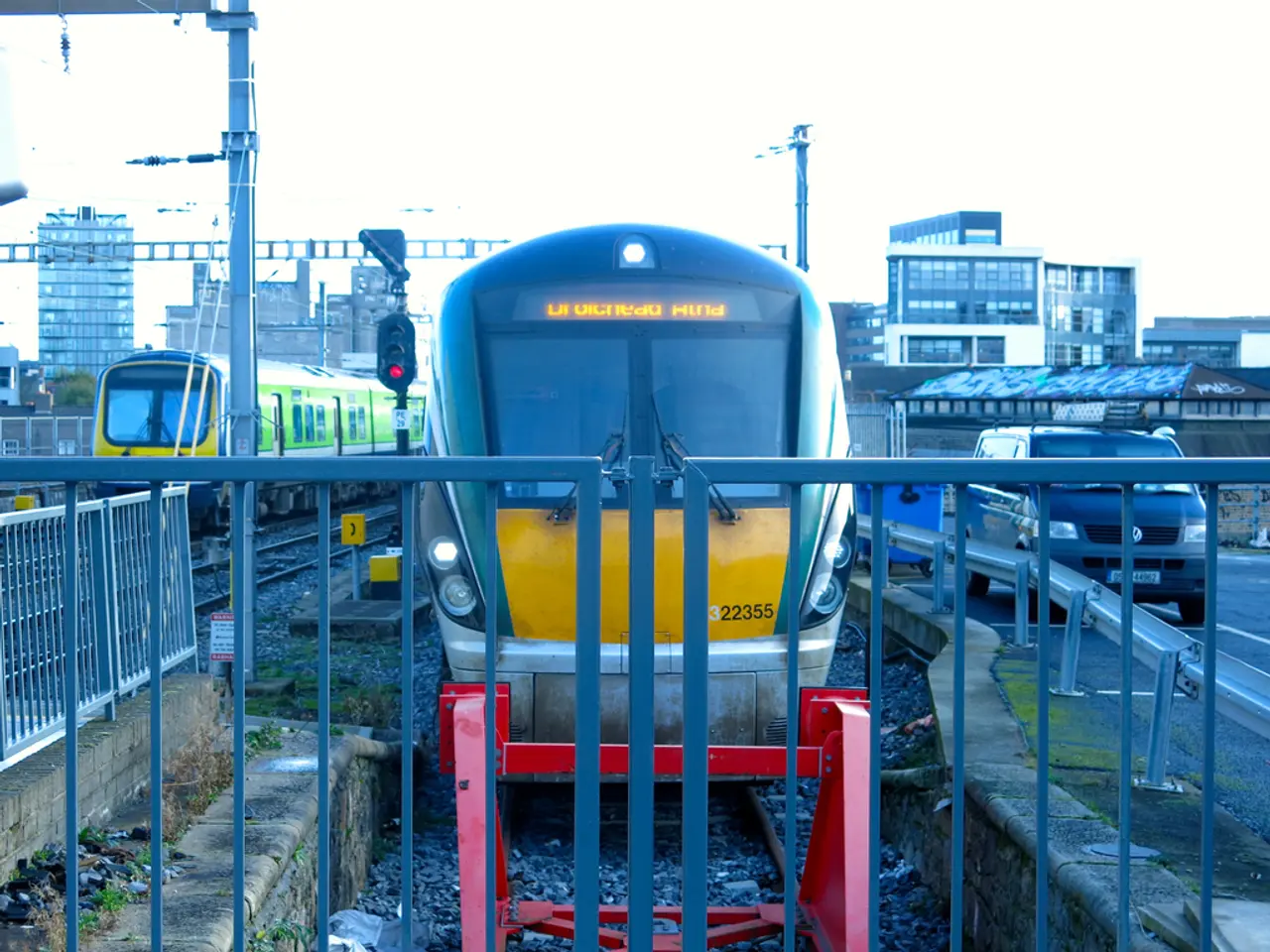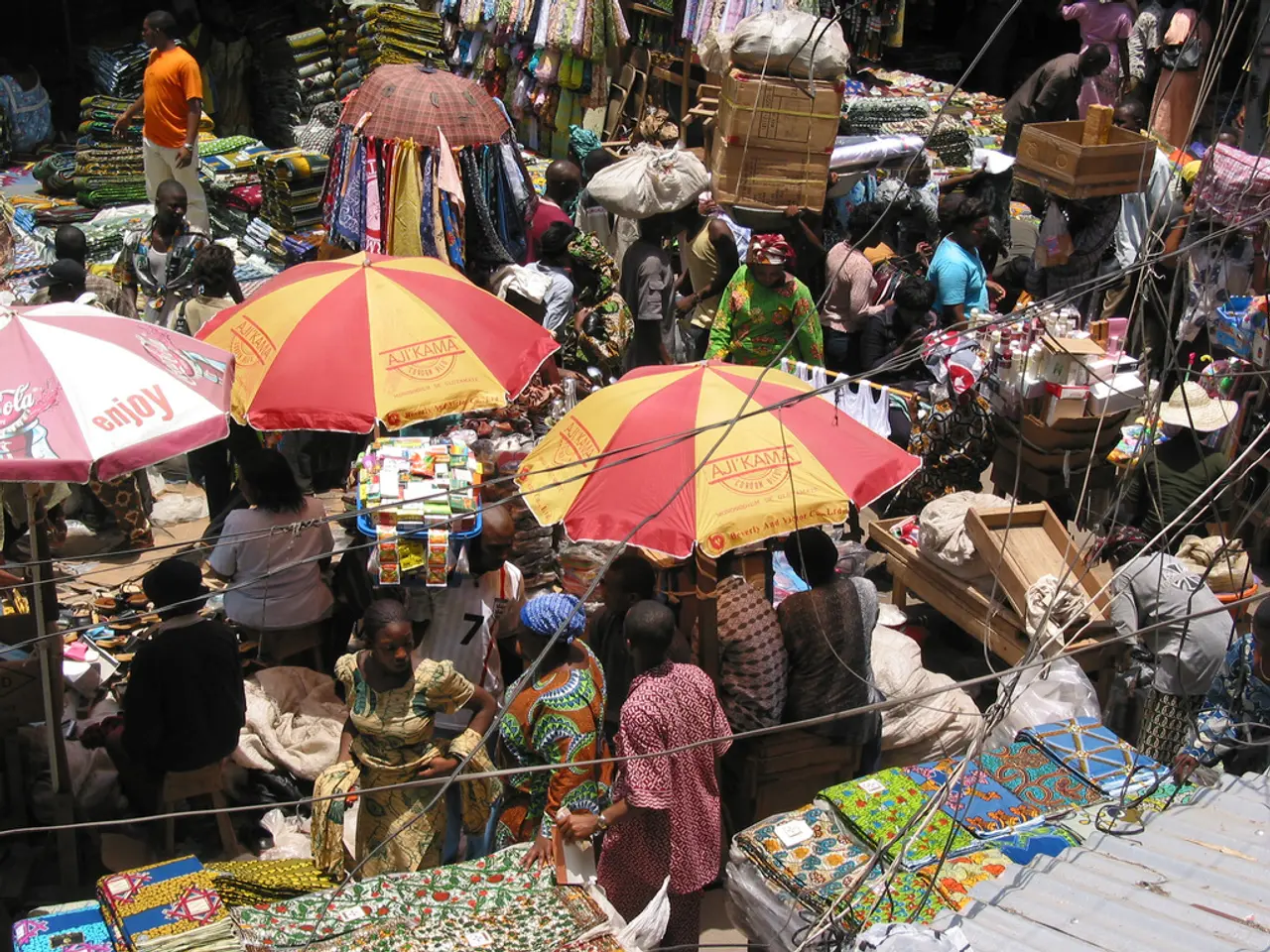Financial shortfall forecasted for railway authorities by 2029, amounting to billions.
Germany's national railway, Deutsche Bahn (DB), is set to receive a significant investment of 107 billion euros for infrastructure upgrades and expansions over the next decade, as part of a broader 500 billion euro infrastructure package announced by the government [1][2][3]. However, the railway is facing a potential funding gap of around 16 billion euros to meet its financial requirements by 2029.
The 107 billion euros investment is designed to support infrastructure, digitalization, and expansion needs for DB, but the railway's CEO, Richard Lutz, has stated that an additional 29 billion euros from a special fund will only be allocated by 2029, leaving a funding gap of around 45 billion euros [1].
DB's modernization and digital upgrade efforts are underway, with plans to renovate dozens of heavily travelled routes and invest in the digitalization of its rail network. However, these efforts are challenged by delays, labor issues, and cost overruns, potentially necessitating supplementary funds to meet targets such as reducing delays by 20% and improving punctuality [1].
The targeted final state of a fully renovated and powerful infrastructure will be delayed by several years due to the stretched timeline, with the last route now scheduled for modernization in 2035 instead of 2031 [1]. This delay will persist operational risks from faulty installations that can only be replaced later, and corridors for the duration of the renovations will be fully closed for months, requiring replacement traffic and long detours for passengers and freight companies.
In a bid to address this funding gap, Richard Lutz is currently in discussions with the industry and politics, hoping to approve a coordinated concept with the federal government in the third quarter [1]. The coalition agreement of the new government states that the timeline for the general renovation will be continuously reviewed.
Despite the challenges, DB is making progress towards its financial requirements. For the fiscal years 2025 and 2026, the railway is quite close to these requirement figures. However, the balance between running and building needs to be resolved in both the multi-year renovation program and the annual construction management.
The long-distance traffic railway missed its punctuality target in the first half of the year, with more than a third of all long-distance trains delayed, and around 80% of these delays due to infrastructure problems and necessary construction sites [1]. As DB moves forward with its ambitious plans for infrastructure upgrades and digitalization, finding a solution to the funding gap will be crucial to ensuring the success of these efforts.
References: [1] Deutsche Welle (2022). Deutsche Bahn faces funding gap in infrastructure upgrade and digitalization efforts. Retrieved from https://www.dw.com/en/deutsche-bahn-faces-funding-gap-in-infrastructure-upgrade-and-digitalization-efforts/a-62137848 [2] Reuters (2022). Germany to invest 500 billion euros in infrastructure over 12 years. Retrieved from https://www.reuters.com/world/europe/germany-invest-500-billion-euros-infrastructure-over-12-years-2022-03-10/ [3] Deutsche Bahn (2022). Investment programme 2021-2025. Retrieved from https://www.db.de/en/investment-programme-2021-2025.html
The 107 billion euros investment is designed to support infrastructure, digitalization, and expansion needs for DB, but the railway's CEO, Richard Lutz, has stated that an additional 45 billion euros, possibly sourced from the industry or finance through discussions, will be required to meet DB's financial requirements by 2029, as the railway's modernization and business growth efforts are underway.
Addressing the funding gap of around 45 billion euros will be crucial for DB, as it moves forward with its ambitious plans for infrastructure upgrades and digitalization, to ensure the success of these efforts and meet its financial requirements.






